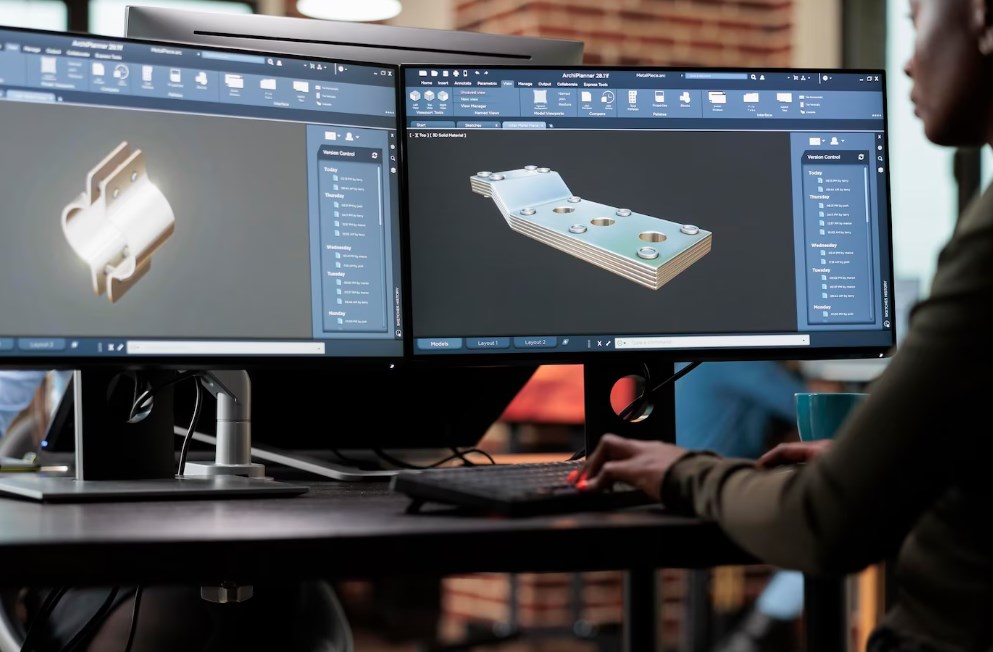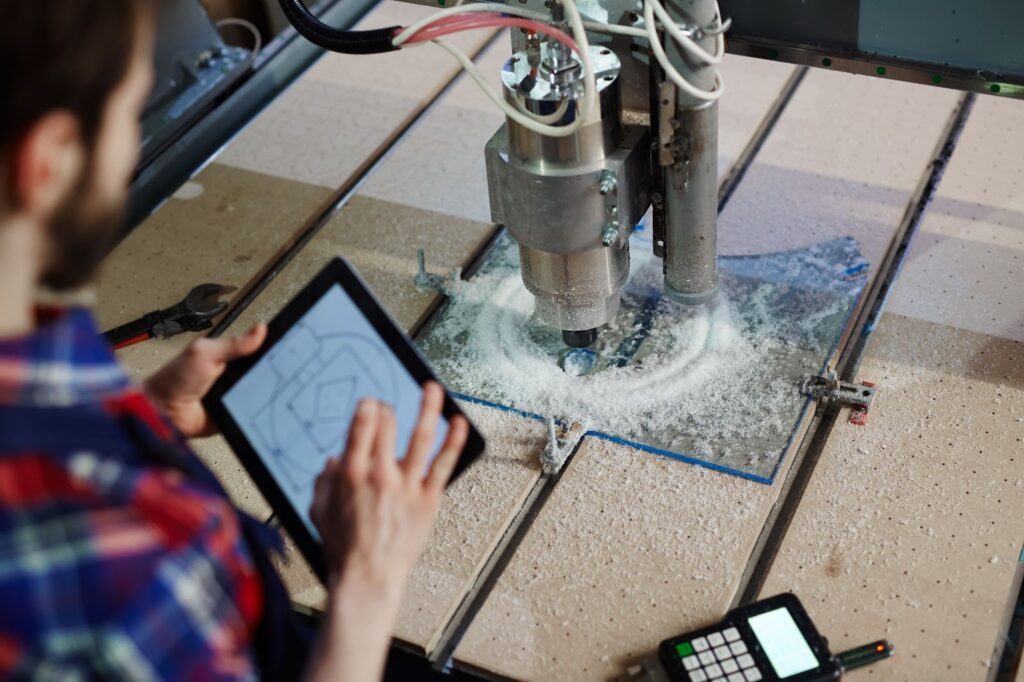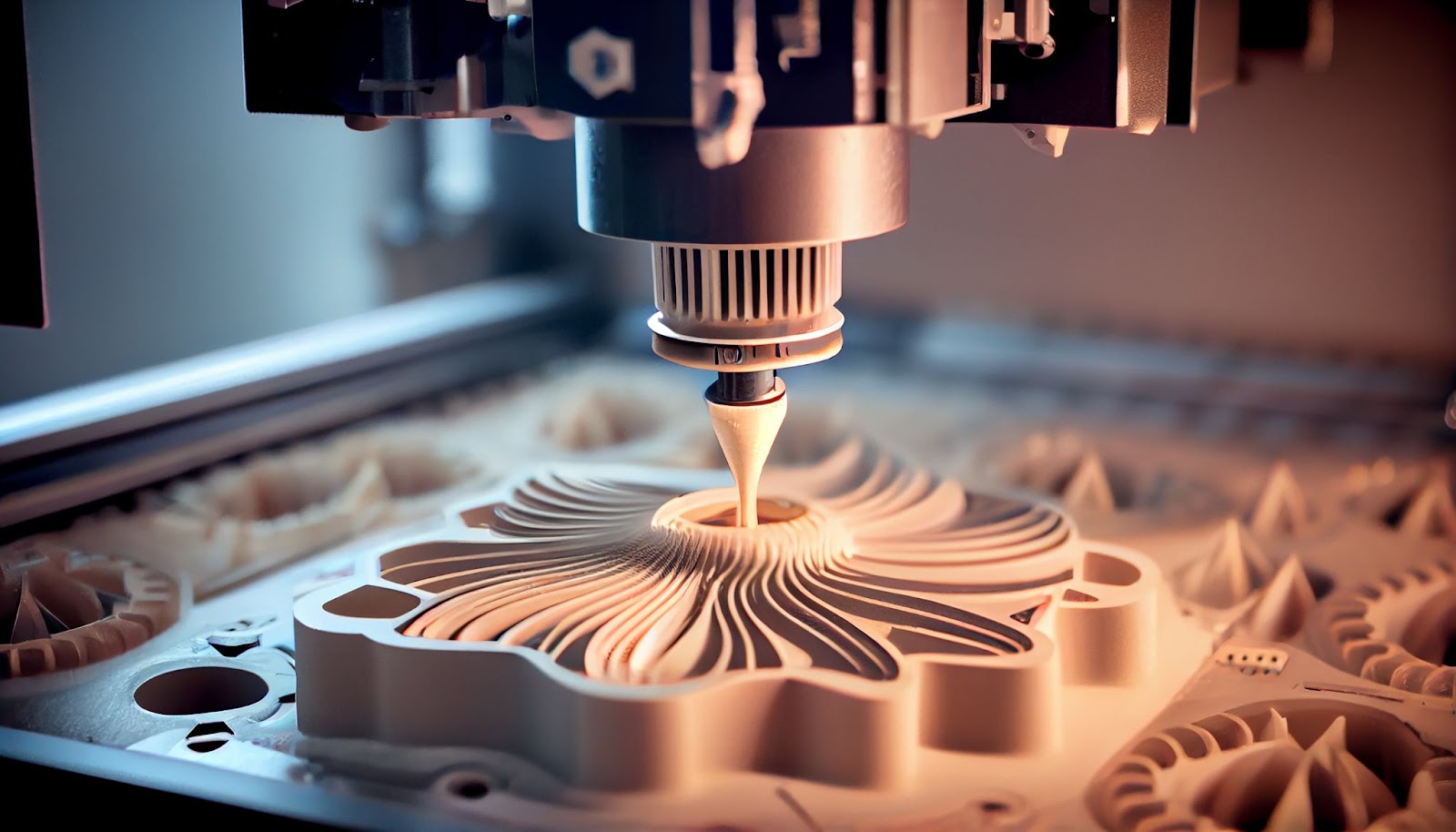Discover how the integration of 3D modeling with Computer Numerical Control (CNC) techniques is redefining the landscape of precision manufacturing. This comprehensive exploration delves into the core concepts, the inherent advantages, potential challenges, and case studies that illustrate the successful application of 3D modeling in CNC methodologies.
Maximizing the Potential of 3D Prototyping for CNC Processing
In the backdrop of rapid technological progression, 3D prototyping has surfaced as a potent instrument in the realm of CNC processing. By marrying the exactness of 3D prototyping with the productivity of CNC methods, producers can embark on an exploration of unprecedented possibilities.
This detailed account will journey through the rudiments of 3D prototyping and CNC operations, the benefits of integrating 3D prototyping in CNC processes, the obstacles and solutions during implementation, and real-life instances of effective 3D prototyping executions in CNC processes.
Decoding the Fundamentals of 3D Prototyping and CNC Processing
What Is 3D Modeling?
3D modeling (hereinafter also “3DM“ or “3D prototyping,” or “3DP” ) involves the generation of a three-dimensional digital representation of a physical entity or structure using advanced software. It empowers designers to digitally fabricate and manipulate intricate blueprints with utmost precision and accuracy.
In this world, there’s no limit to what you can create. Designers have the freedom to fabricate everything from straightforward geometric entities to intricate architectural constructs, mechanical components, and even characters for video games and animations. The software used for 3D prototyping is equipped with a broad spectrum of features and tools, enabling designers to infuse textures, colors, and realistic lighting effects into their creations.
One of the striking benefits of 3DP is its capability to visualize the end product prior to actual production. Engineers can rotate the prototype, zoom in and out, and even simulate its functionality. This predictive capability helps pinpoint potential design flaws or areas requiring enhancements, conserving both time and resources during manufacturing.
An Introduction to CNC Processing
CNC processing, an acronym for Computer Numerical Control processing, is a production methodology that employs computer-controlled machinery to shape and trim materials into precise and intricate forms. It offers unparalleled precision and repeatability, making it the optimal choice for generating high-quality components and parts:
- In CNC operations, the entire production process is automated, eliminating manual intervention. The blueprint developed through 3D prototyping is converted into a set of instructions, referred to as G-code, which guides the movements of the CNC machine. This code directs the machine on how to orient the workpiece, which instruments to deploy, and the specific cutting trajectories to adhere to;
- CNC machines can work with a vast array of materials, including metals, plastics, wood, and composites. They can execute a broad range of operations, such as milling, turning, drilling, and grinding, with impeccable precision. This versatility makes CNC processing an efficient and adaptable manufacturing technique used across various sectors;
- One of the salient benefits of CNC processing is its capacity to generate highly complex shapes that would be challenging or impossible to achieve using conventional machining techniques. The computerized nature of the process ensures consistent and accurate outcomes, even for elaborate designs with tight tolerances;
- Beyond its precision, CNC processing also boasts superior efficiency and productivity. Once the machine is primed and the program is loaded, it can operate non-stop, generating components with minimal human involvement. This enables manufacturers to meet stringent deadlines and manage substantial production volumes with ease.
Moreover, CNC processing provides a high level of reproducibility. Once a program is formulated and tested, it can be reused to generate identical parts repeatedly. This consistency is crucial in sectors where precision and quality are paramount, such as aerospace, automotive, and medical.

The Confluence of 3D Prototyping and CNC Processing
The amalgamation of 3D prototyping and CNC operations has brought a seismic shift to the manufacturing industry, offering a range of benefits and pathways for innovation. By incorporating 3D prototyping into CNC methods, manufacturers can streamline the entire production journey, leading to enhanced efficiency and superior product quality.
How 3D Prototyping Augments CNC Techniques
A prime benefit of integrating 3D prototyping into CNC methods is the capability to develop intricate and elaborate designs, previously deemed unfeasible. Utilizing state-of-the-art software, designers can now generate digital blueprints featuring detailed specifications and sophisticated geometries. These digital drafts can then be seamlessly translated into machine-readable code, guiding CNC machines to accurately carve the envisioned design.
Moreover, 3D prototyping facilitates swift prototyping, enabling manufacturers to easily modify the digital design and assess its functionality before entering the manufacturing phase. This minimizes the risk of expensive mistakes and empowers manufacturers to deliver superior quality products within reduced timelines. The cyclical procedure of designing, testing, and refining using 3D prototyping markedly expedites the product development cycle.
Practical Implementations of 3D Prototyping in CNC Methods
The practical applications of 3D prototyping in CNC techniques are vast, diverse, and cut across various sectors. Here are a few examples:
- Aerospace: In the aerospace sector, 3D prototyping is extensively utilized to fabricate intricate elements like turbine blades and aircraft frames. The ability to accurately reproduce complex geometries and optimize designs for weight reduction has enhanced fuel efficiency and overall performance of aircraft;
- Medical: In the medical domain, 3D prototyping has revolutionized the creation of custom prosthetics and implants. By leveraging patient-specific data, healthcare professionals can design and manufacture implants tailored to individual patients, enhancing comfort and functionality. Furthermore, 3D prototyping facilitates the creation of intricate internal structures, like porous scaffolds for tissue engineering, fostering cell growth and tissue regeneration;
- Fashion: Even within the fashion industry, 3D prototyping has found its niche, empowering designers to create unique and sophisticated patterns for clothing and accessories. With 3D prototyping software, designers can experiment with various shapes, textures, and materials, pushing the boundaries of conventional fashion design.
The fusion of 3D prototyping and CNC techniques has opened up infinite avenues for innovation and creativity across numerous sectors. From aerospace to medicine to fashion, the integration of these technologies has revolutionized product design and manufacture, leading to enhanced efficiency, superior product quality, and heightened customer satisfaction.
Merits of Employing 3D Prototyping in CNC Techniques

Elevated Precision and Accuracy
The most prominent benefit of utilizing 3D prototyping in CNC methods is the remarkable enhancement in the precision and accuracy of the end product. The accuracy achievable through 3D prototyping surpasses traditional manual methods, ensuring each component adheres to exact specifications.
This is where designers can generate intricate and elaborate designs, unachievable through manual techniques. The computer software allows for precise measurements and computations, culminating in a finished product that meets the most stringent standards of accuracy. Plus, you can also visualize the product in a virtual environment prior to its actual manufacture. This predictive capability enables early identification and rectification of potential design flaws, minimizing the risk of errors and guaranteeing a flawless end product.
Enhanced Efficiency and Productivity
3DP boosts overall efficiency and productivity in CNC techniques by decreasing the time and effort required for manual design and prototyping. Designers can swiftly iterate and adjust the digital model, negating the need for physical prototypes and extended testing phases. This results in shorter production timelines and a faster time-to-market.
Additionally, it streamlines the manufacturing process. The digital model can be directly input into the CNC machine, bypassing manual programming and reducing the risk of human error. This automated process not only saves time but also bolsters productivity by allowing multiple machines to simultaneously work on different components.
The digital nature of 3DP fosters easy collaboration among designers, engineers, and manufacturers. Changes and modifications can be made in real-time, ensuring all stakeholders are in sync, thereby reducing the chances of miscommunication or misunderstandings.
Boosted Customization Abilities
With the integration of 3D modeling, manufacturers can readily tailor designs to meet distinctive customer specifications. Be it an unusual shape, complex pattern, or personalized part, 3DM offers designers the liberty to craft highly bespoke products with ease. Such degree of customization can be pivotal in industries like jewelry, automotive, and architecture.
Moreover, 3D modeling facilitates easy scalability and flexibility in production. Designers can swiftly tweak the size, shape, or other parameters of the digital model to accommodate different versions or iterations of a product. This adaptability proves particularly beneficial in sectors where customization and responsiveness to fluctuating market demands are paramount.
The employment of 3DM opens doors for swift prototyping and testing. Manufacturers can construct physical prototypes directly from the digital model, allowing for rapid evaluation of the design and identification of potential issues. This cyclical process ensures that the ultimate product adheres strictly to the customer’s specifications and needs.
Challenges and Resolutions in Incorporating 3D Modeling for CNC Techniques:
- Tackling Common Hurdles: Initial investment needed for procuring the necessary software and machinery is a common hurdle. However, with technology advancement, the cost of 3DM software and CNC machines has become more reasonable, increasing accessibility to manufacturers of varied scales;
- Technological Innovations: Enhanced software capabilities, like simulation tools and automated design optimizations, simplify the process for designers. Integration of AI-powered algorithms and machine learning further boosts the efficiency and accuracy of the entire manufacturing process.
Success Stories of Implementing 3D Modeling in CNC Techniques:
- Industry Applications: In the automotive sector, 3D modeling has empowered manufacturers to design and produce lightweight parts with complex geometries, leading to improved fuel efficiency and overall vehicle performance;
- Insights Gained: Successful implementations have imparted insights regarding the significance of investing in proficient personnel, welcoming technological advancements, and ensuring open communication channels between the design and manufacturing teams.
Insights Gained from Successful Implementations
These successful implementations have imparted valuable insights to manufacturers regarding the significance of investing in proficient personnel, welcoming technological advancements, and ensuring open communication channels between the design and manufacturing teams.
These lessons can serve as guidelines for other sectors looking to harness the potential of 3D modeling in CNC techniques.
| Key Takeaways | Details |
|---|---|
| Precision and Accuracy | 3DM provides enhanced precision and accuracy in CNC machining, enabling the creation of complex designs and detection of potential design flaws early on. |
| Efficiency and Productivity | 3DM accelerates the design process by eliminating the need for physical prototypes and lengthy testing phases, thereby reducing production time and facilitating faster time-to-market. |
| Customization Capabilities | 3D modeling allows for the design of highly customized products, rapid prototyping, and easy scalability, meeting specific customer requirements and adapting to changing market demands. |
| Overcoming Challenges | Despite initial investment hurdles, technological advancements have made 3DM more accessible and efficient. Improved software capabilities, AI integration, and machine learning are notable advancements. |
| Industry Applications and Lessons | 3DM has proven successful in industries like automotive, contributing to improved efficiency and performance. Key lessons include investing in skilled personnel and maintaining open communication between design and manufacturing teams. |
Conclusion
The amalgamation of 3D modeling and CNC techniques has revolutionized the manufacturing industry. Its capacity to elevate precision, bolster efficiency, and unleash customization abilities, 3DM paves the way for boundless innovation and creativity.
Despite potential challenges in its implementation, ongoing technological advancements and success stories demonstrate its potential to transform product design and manufacturing processes.
By embracing 3DP, manufacturers can explore a world of opportunities and maintain their competitive edge in the continuously evolving manufacturing landscape.
